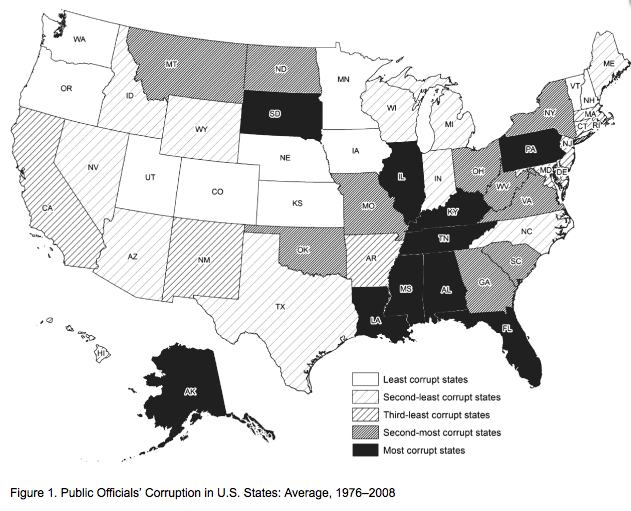The high cost of government corruption to the South

How much does government corruption cost state taxpayers?
That's the question two professors considered in a recent study that compares rates of corruption -- defined as the misuse of public office for private gain -- and state spending. The authors of the article, which appears in the May/June issue of Public Administration Review, are Cheol Liu of the City University of Hong Kong and John L. Mikesell of Indiana University at Bloomington.
The authors based their corruption index on the number of public officials convicted for violating federal corruption laws -- data compiled by the U.S. Department of Justice's Public Integrity Section. As it turns out, six of the 10 most corrupt states are in the South, with Mississippi in first place followed by Louisiana, Tennessee, Illinois, Pennsylvania, Alabama, Alaska, South Dakota, Kentucky, and Florida.
The authors then considered how corruption affects state spending. They hypothesized that the observed expenditures in the 10 most corrupt states should be greater than the estimated expenditures. That expectation held for nine of the 10 most corrupt states, excluding South Dakota.
The average "corruption gap" annually per capita? $1,308.
"This implies that the nine most corrupt states could have spent $1,308 less annually per capita, on average, if they had succeeded in maintaining only an average corruption level," Liu and Mikesell write.
They called on policy makers to "pay close attention that public resources are not used for private gains of the few but rather distributed effectively and fairly for various purposes."
Tags
Sue Sturgis
Sue is the former editorial director of Facing South and the Institute for Southern Studies.
